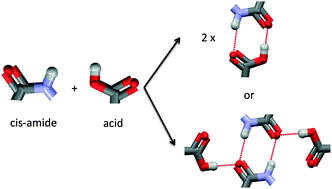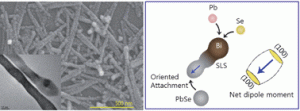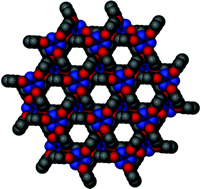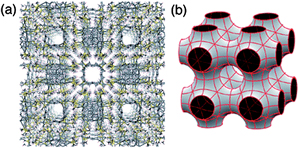This month sees the following articles in CrystEngComm that are in the top ten most accessed:-
Some thoughts about the single crystal growth of small molecules
Bernhard Spingler, Stephan Schnidrig, Tonya Todorova and Ferdinand Wild
CrystEngComm, 2012, 14, 751-757 DOI: 10.1039/C1CE05624G
Framework dimensionality of copper(i) coordination polymers of 4,4′-bipyrimidine controlled by anions and solvents
Masahiko Maekawa, Toshi Tominaga, Kunihisa Sugimoto, Takashi Okubo, Takayoshi Kuroda-Sowa, Megumu Munakata and Susumu Kitagawa
CrystEngComm, 2012, 14, 1345-1353 DOI: 10.1039/C1CE06328F
Two novel 2D cadmium(ii) MOFs based on flexible bis(imidazolyl) and zwitterionic dicarboxylate ligands
Xiaoju Li, Xiaofang Guo, XiuLan Weng and Shen Lin
CrystEngComm, 2012, 14, 1412-1418 DOI: 10.1039/C1CE06216F
Three unprecedented open frameworks based on a pyridyl-carboxylate: synthesis, structures and properties
Shengqun Su, Wan Chen, Xuezhi Song, Min Zhu, Chao Qin, Shuyan Song, Zhiyong Guo, Song Wang, Zhaoming Hao, Guanghua Li and Hongjie Zhang
CrystEngComm, 2012, Advance Article DOI: 10.1039/C2CE05948G
New compounds constructed from polyoxometalates and transition metal coordination complexes with lower positive charge
Yan Wang, Yu Peng, Li-Na Xiao, Yang-Yang Hu, La-Mei Wang, Zhong-Min Gao, Tie-Gang Wang, Feng-Qing Wu, Xiao-Bing Cui and Ji-Qing Xu
CrystEngComm, 2012, 14, 1049-1056 DOI: 10.1039/C1CE05633F
3D-hierarchical SnS2 micro/nano-structures: controlled synthesis, formation mechanism and lithium ion storage performances
Jiantao Zai, Xuefeng Qian, Kaixue Wang, Chao Yu, Liqi Tao, Yinglin Xiao and Jiesheng Chen
CrystEngComm, 2012, 14, 1364-1375 DOI: 10.1039/C1CE05950E
Auxiliary ligand-directed synthesis of cadmium(ii) and zinc(ii) complexes from 1-D chains to 3-D architectures with 5-nitroisophthalate
Xinyi Lu, Junwei Ye, Wei Li, Weitao Gong, Lijian Yang, Yuan Lin and Guiling Ning
CrystEngComm, 2012, 14, 1337-1344 DOI: 10.1039/C1CE06268A
Homochiral assembly of polycatenated bilayers with mixing achiral ligands
Juan Liu, Yan-Xi Tan, Fei Wang, Yao Kang and Jian Zhang
CrystEngComm, 2012, 14, 789-791 DOI: 10.1039/C2CE06297F
Conformation variation of tris(2-carboxyethyl)isocyanuric acid induced by cocrystallized N-heterocyclic organic molecules
Fangna Dai, Di Sun, Wenming Sun, Yun-Qi Liu and Daofeng Sun
CrystEngComm, 2012, 14, 1376-1381 DOI: 10.1039/C1CE06209C
Assembly of four d10-metal inorganic–organic hybrid coordination polymers based on bipyrazine imine-based ligand: Synthesis, crystal structures and luminescent properties
Yan Bai, Jun-Li Wang, Dong-Bin Dang, Meng-Meng Li and Jing-Yang Niu
CrystEngComm, 2012, Advance Article DOI: 10.1039/C1CE06030A
Why not take a look at the articles today and blog your thoughts and comments below.
Fancy submitting an article to CrystEngComm? Then why not submit to us today or alternatively email us your suggestions.






















